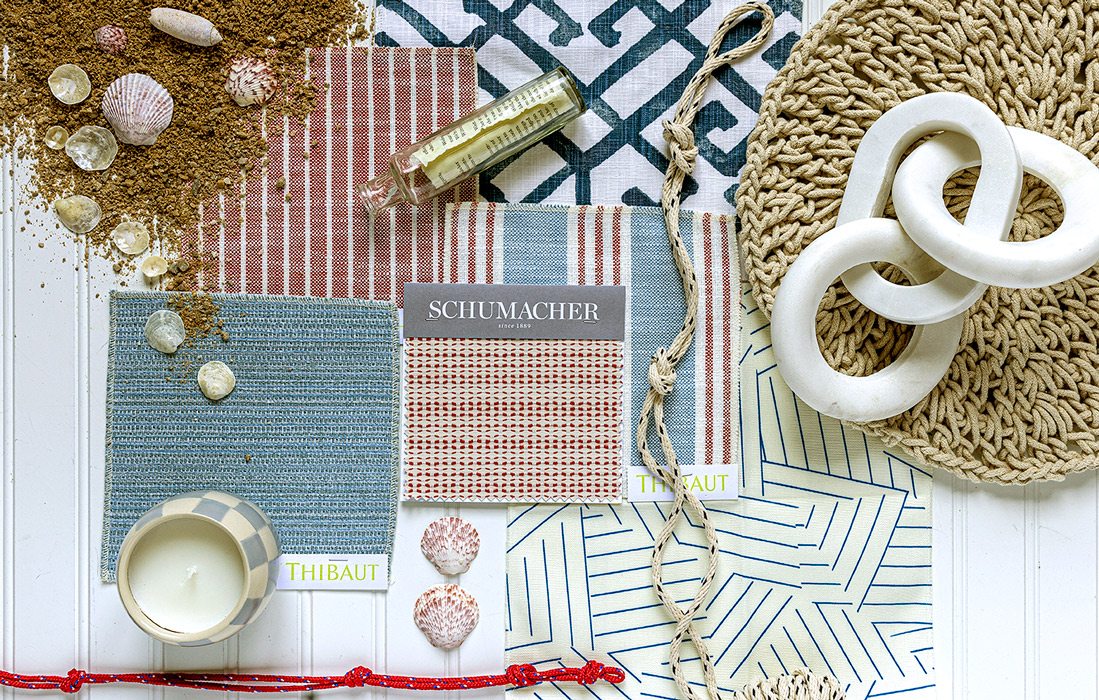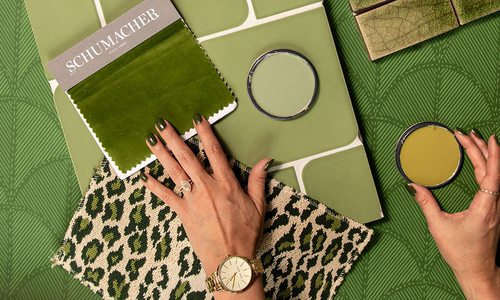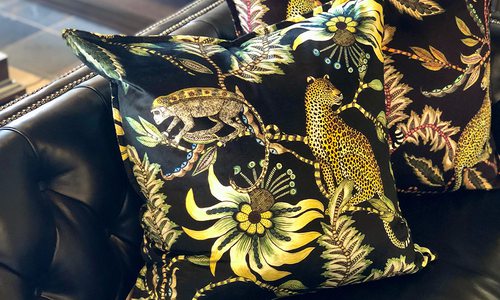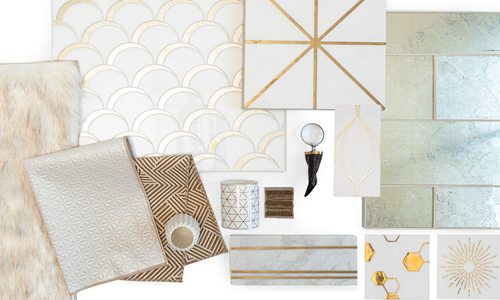Outdoor Spaces
Fabulous Outdoor Fabrics
New tech in the fabric industry has turned designer prints into durable outdoor fabrics.
By Heather Kane Kohler
Jun 2022

Above: Schumacher Branford in red, $176 per yard at Bridge Upholstery; Schumacher Deconstructed Stripe II in cobalt, $156 per yard at Bridge Upholstery; Thibaut Bayside Stripe in cranberry, $126 per yard at Resource Room; Thibaut Strata in sky, $140 per yard at Resource Room; Thibaut Southport Stripe in sky blue and red $132 per yard at James Decor; marble chain decor, $56 at The Market; Paddywax cotton teak candle, $37 at The Market; Danica Heirloom knotted placemat, $10 at The Market; Fabricut Fluxrott in blue, $37 per yard at Resource Room.
In today’s world of outdoor fabrics, the options have grown from a few classic striped fabrics to an endless choice of patterns, colors and materials. Many designers and homeowners gravitate to outdoor fabrics that are upbeat and happy because that’s how we all want our guests to feel when sitting on our patios or front porches. Colorful stripes are always a classic choice, but florals, leafy greens, and lattice styled prints have increased in popularity as well.
After you land on what print and color you want, things can get a bit tricky from there. When it comes to reading labels related to rubs and UV ratings, making an educated choice without a chemistry degree can seem out of reach. Outdoor fabrics are made to withstand UV rays, precipitation, pollen, dirt and mildew. Just what you want for your outdoor space, but before choosing the right outdoor fabric you need to think about how you will use it. Solution-dyed acrylic and woven polyester work well for all indoor and outdoor pillows and drapery. For cushions and upholstery, 100% solution-dyed acrylic and fabric that passes 117,000 double rubs are best. Upholstery that will spend extensive hours in the hot sun should be made with 100% solution-dyed acrylic because of its high UV rating.
To get the most out of your outdoor fabrics, clean regularly using a soapy solution, along with lukewarm—not hot—water. Keeping your outdoor fabrics as clean as possible while enabling them to breathe will maintain their longevity.












